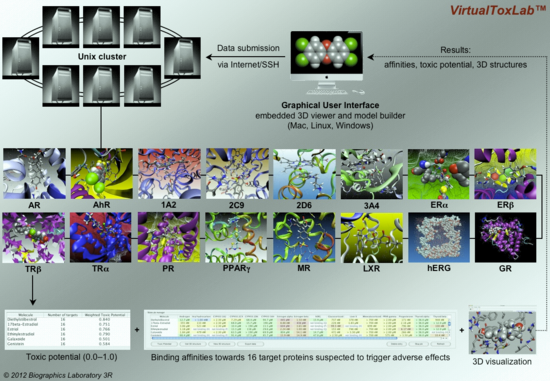Virtual Tox Lab
In silico predicition of the toxic potential of drugs, chemicals and natural products
Side effects and compound toxicity are frequent causes of late-stage failures in drug development. A safe identification of adverse effects triggered by drugs and chemicals in silico would be highly desirable as it not only bears economical potential but also spawns a variety of ecological benefits: sustainable resource management, reduction of animal models and possibly less risky clinical trials. The VirtualToxLab developed at the Biographics Laboratory 3R is an in silico tool for predicting the toxic potential (endocrine and metabolic disruption, some aspects of carcinogenicity and cardiotoxicity) of existing and hypothetical compounds (drugs, chemicals, natural products) by simulating and quantifying their interactions towards a series of proteins suspected to trigger adverse effects using automated, flexible docking combined with multi-dimensional QSAR. Currently, it comprises models for the the androgen, aryl hydrocarbon, estrogen α/β, hERG, glucocorticoid, liver X, mineralocorticoid, PPARγ, progesterone, thyroid α/β receptor as well as the enzymes cytochrome P450 1A2, 2C9, 2D6 and 3A4. Most important, the VirtualToxLab allows to rationalize a prediction at the molecular level by analyzing ligand binding with all protein targets in real-time 3D. The client–server technology is accessible over the Internet and free of charge for universities, governmental agencies, regulatory bodies and environmental NPOs. The free platform of the technology - the OpenVirtualToxLab - is hosted by the University of Basel.

